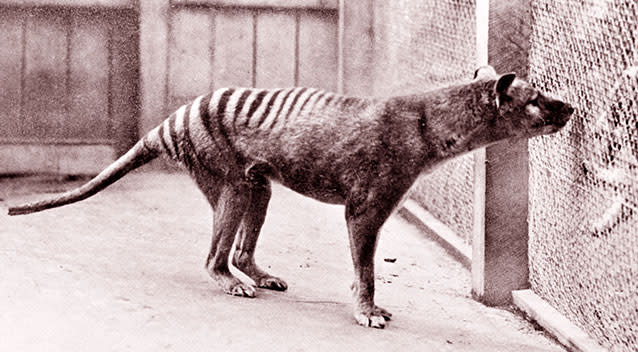How 'Jurassic Park' technology could bring back extinct Tasmanian tiger
The Tasmanian Tiger could come back from extinction thanks to new DNA technology.
Scientists in the US are using a DNA tool, known as CRISPR, to recreate the iconic animal’s genetic blueprint.
University of Melbourne associate professor Andrew Pask described the procedure as “complicated” and “exactly the same technology” as in the Jurassic Park films.

“Basically, you can take the DNA from a closely related living species and you can make all the edits that you see and all the differences you can see from a thylacine genome and put them into the living marsupial species genome,” Professor Pask told Sunrise.
“Rather than it being science fiction, which was when the book (Jurassic Park) was written, it is now becoming science fact.”
Professor Pask said teams in the US were making a lot of progress with the mammoth genome and could have an elephant-mammoth hybrid in a few years.
He added the technology could be applied to a number of different species but the “thylacine is a great candidate” because “it’s a recent extinction event” and the habitat for it in Tasmania still exists.

“I think the big question is what will these animals actually look like when they’re made?” Professor Pask said.
“Because they are this combination of DNA from a living species as well as that from the extinct species so we’re still not sure exactly what they’re going to look like and I guess that remains to be seen.”
Professor Pask added “the ultimate goal” would be the species being able to breed.


